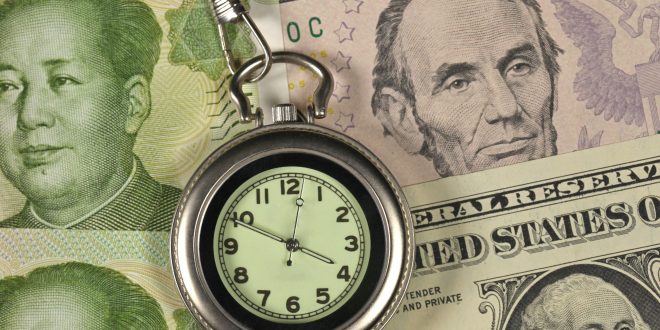There were a lot of market drivers last week like the Fed and Bank of England meeting and tensions over the Brexit talks and developments for the Corona vaccine as well as the continuing trade tension between the US and China and the TikTok crisis.
There was a lot of volatility in stock markets last week with uncertainty prevailing over the possibility of Congress passing the second round of financial support for Corona relief.
US stocks retreated on Friday after soft economic data, as well as posting a third consecutive weekly loss on Wall Street after the weak performance of the technology sector. The Dow Jones Industrial Average fell 0.9% to 27,657, down 0.1%, S&P 500 index fell 1.07% at 3,215.6, down by1.07%. While the Nasdaq Composite fell 0.1% to 10,739, posting a loss of 0.6%.
The current account deficit surged by 52.9% to $170.5 billion in Q2 of 2020, its highest level in about 12 years, since Q3 of 2008.
Meanwhile, Q1 of the year witnessed $111.5 billion in current account deficit, revised from an initial reading of $104.2 billion.
The US dollar index witnessed volatility during the week, declining by 0.04% to 92.8930 in Friday’s trading, recording weekly losses of 0.44% compared to the previous week’s close at 93.3330.
The United States Federal Reserve has decided in its meeting, held on Tuesday and Wednesday, to maintain the current rates, expected to maintain rates steady until inflation exceeds 2%.
As expected, the Fed expressed commitment to maintain interest rates near 0%.
This is the first meeting for the US monetary policymakers after adapting the new framework, which allows inflation to go above 2%.
The US Labor Department said that the total number of new applications for unemployment benefits, adjusted in light of seasonal factors, amounted to 860,000 for the week ending September 12, compared with 893,000 in the previous week. Economists polled by Reuters had forecast 850,000 orders in the latest week. And the number of requests is more than four times its level at the beginning of the year.
The pan-European STOXX 600 index fell 0.7% to 368.78 while posting a weekly gain of 0.22%, the FTSE index fell 0.071% to 6007.05, down by 0.42%, the German DAX index also fell 0.7% to 13,116.25, while the French CAC index fell by 1.22% to 4,978.18, posting weekly losses of 1.11%.
Asian stocks were witnessing some gains last week, with the Nikkei rising 0.2% during the week to close at 23360.30 and the broader Topix index losing 9.42 points during the week, down about 0.6% and closing the week at 1646.42.
Gold prices witnessed a rise at the beginning of last week, with the uncertainty that dominates the markets due to the economic conditions and the upcoming US presidential elections.
Gold prices rose during last Friday’s trading, amid negative stability for the dollar against most of the major currencies, so that the precious metal could post weekly gains.
Gold futures for December delivery rose 0.6%, with gains of $ 12.20 to $ 1962.1 an ounce, and the yellow metal made weekly gains of 0.7%.
Oil prices closed higher, after OPEC+ expressed the importance of commitment to the output cuts.
Brent crude futures for November delivery increased by $1.08, or 2.6%, and settled at $43.30 per barrel.
The West Texas Intermediate (WTI) futures for October delivery finished higher by 81 cents, or 2%, at $40.97 per barrel.
Data from the European Central Bank showed that the revised current account surplus of the 19 Eurozone countries shrank to 16.6 billion Euros in July from 20.7 billion Euros in June, as a decline in the primary income account eroded the impact of an increase in the trade surplus.
In the twelve months to June, the bloc’s current account surplus decreased to 2.2% of GDP from 2.6% in the previous twelve months, mainly due to the decline in the surplus from trade in services and the decline in primary income flows, which include profits from External investments.
Official figures showed that UK retail sales continued to post gains last month, as parts of the sector recovered faster than most of the economy.
The Office for National Statistics said retail sales volumes rose 0.8% in August, slightly more than the median forecast of 0.7% in a Reuters poll.
And compared to the same period last year, when it rose 2.8%, compared to expectations of annual growth of 3%.
UK retail sales already surpassed pre-Covid levels in July and are now 4% higher than before the crisis.
 Noor Trends News, Technical Analysis, Educational Tools and Recommendations
Noor Trends News, Technical Analysis, Educational Tools and Recommendations





